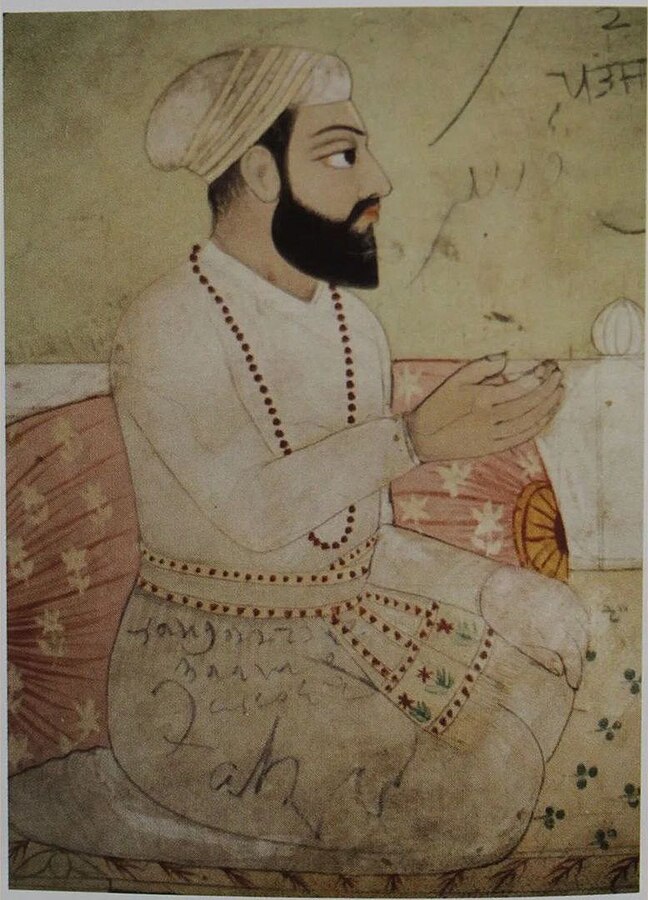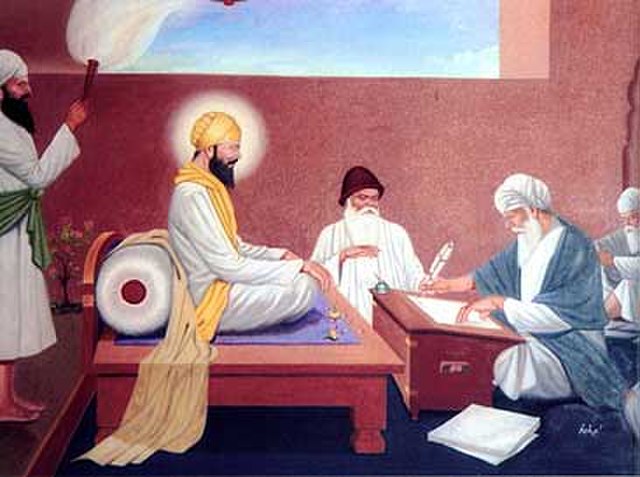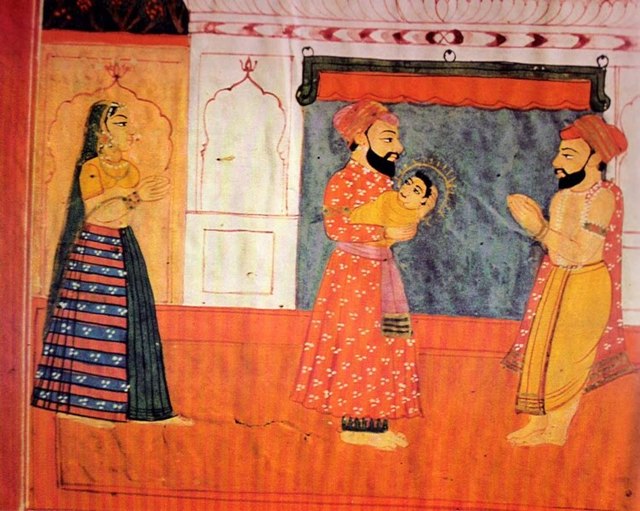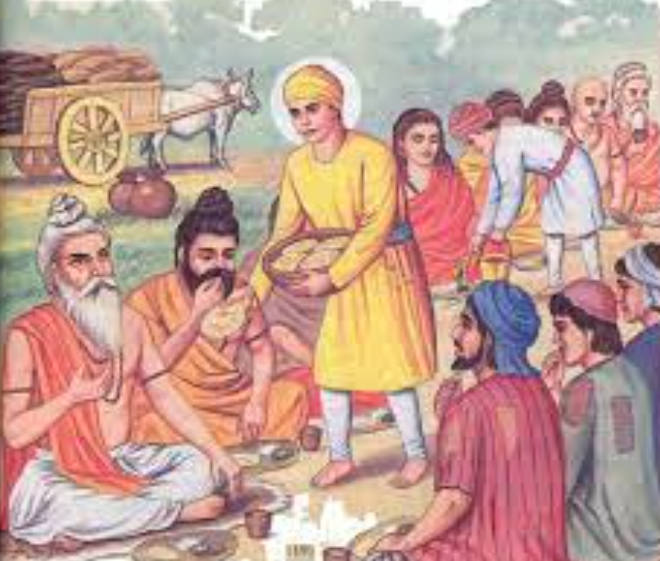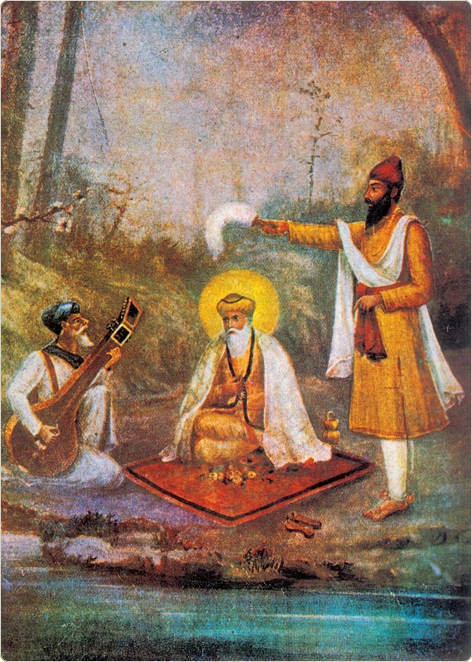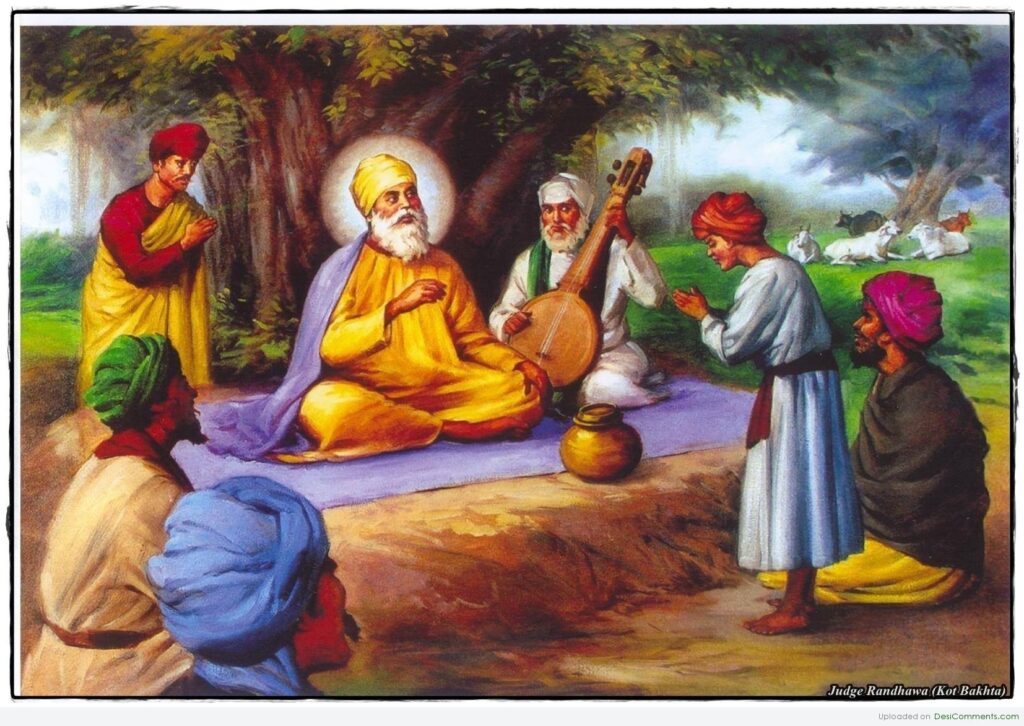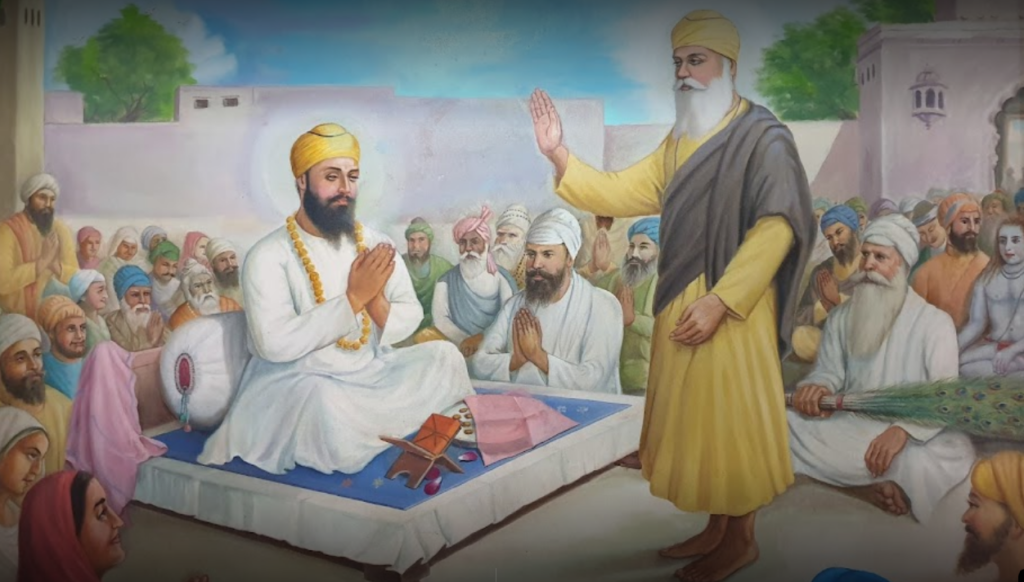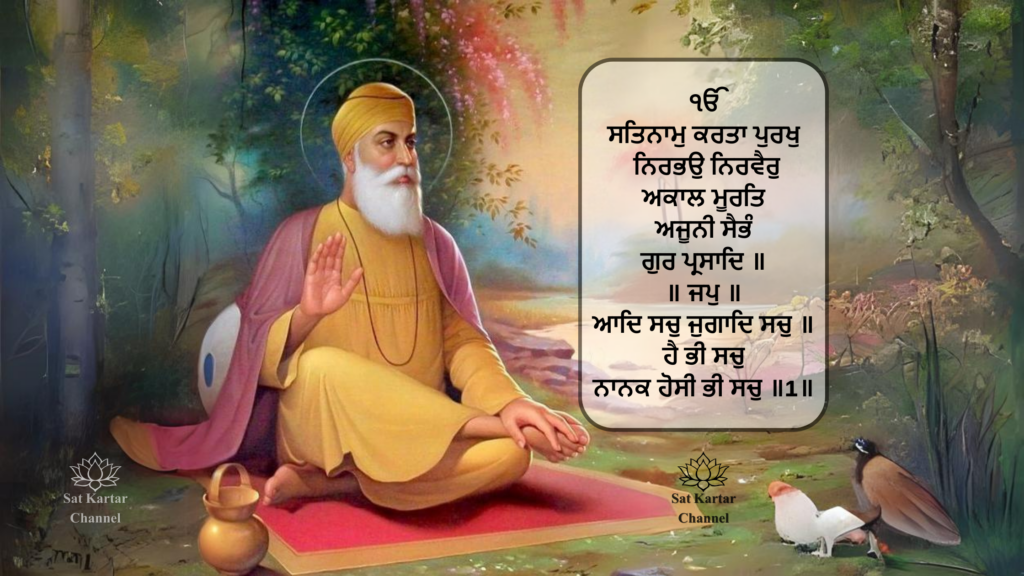In the landscape of 15th-century India, religion had become a tightly bound system of rituals, superstitions, and hierarchies. The spiritual essence had long been buried beneath institutionalized dogma and empty ceremonial displays. It was during this period of deep moral and spiritual crisis that Guru Nanak Dev Ji was born in 1469 AD. His mission was not just to establish another sect or religion, but to rekindle the eternal light of truth, love, Oneness and inner awakening.
Today, however, many of the same issues Guru Nanak Dev Ji challenged have resurfaced, often cloaked in modern religious practices. The institutionalized version of Sikhi, led by the “Pujaaris” (priestly class), tends to mirror the very rituals and superficial customs that Guru Nanak Sahib rejected. Through this blog, I am trying to draw your attention towards the stark contrast between the original Sikhi of Guru Nanak and the ritual-dominated practices that have crept into modern-day religious life.
The Religious Setting Before Guru Nanak
Before we delve into Guru Nanak’s vision, it is essential to understand the religious context into which he was born. India at that time was dominated by two major traditions:
- Hindu Brahmins, deeply entrenched in caste discrimination, idol worship, and hollow rituals.
- Muslim Influence, where people were forcefully converted to Islam, rigid orthodoxy, and religious policing of personal lives was common during those days.
Both systems relied heavily on intermediaries—priests, maulvis, and religious functionaries—who claimed authority over the souls of the masses. These middlemen used fear, guilt, and the promise of paradise or threat of hell to control people’s lives.
It was in this socio-religious setting that Guru Nanak appeared, not to add one more label to the long list of “isms,” but to wipe the slate clean and present a fresh path to spiritual realization.
Guru Nanak’s Unique Vision of Sikhi
Guru Nanak replaced these socio-religious settings with the Divine word (Shabad) Of God and from there came Gurbani. Since there is One Universal Consciousness (ੴ ) what we call as God, so Guru Nanak and all other self-realized masters declared that we as human beings are not born so that we can be divided into different religious sects and there is absolutely no need to follow these hollow religious practices.
Guru Granth Sahib Ji declares that :
1. Ang 1349
ਅਵਲਿ ਅਲਹ ਨੂਰੁ ਉਪਾਇਆ ਕੁਦਰਤਿ ਕੇ ਸਭ ਬੰਦੇ ॥
aval aleh noor upaiaa kudharat ke sabh ba(n)dhe ||
First, Allah created the Light; then, by His Creative Power, He made all mortal beings.
ਏਕ ਨੂਰ ਤੇ ਸਭੁ ਜਗੁ ਉਪਜਿਆ ਕਉਨ ਭਲੇ ਕੋ ਮੰਦੇ ॥੧॥
ek noor te sabh jag upajiaa kaun bhale ko ma(n)dhe ||1||
From the One Light, the entire universe welled up. So who is good, and who is bad? ||1||
2. Ang 1136
ਨਾ ਹਮ ਹਿੰਦੂ ਨ ਮੁਸਲਮਾਨ ॥
naa ham hi(n)dhoo na musalamaan ||
I am not a Hindu, nor am I a Muslim.
Guru Nanak’s teachings can be summarized as a spiritual revolution. His vision was not merely reformative but transformative. It called for a complete dismantling of the existing structures that bound spirituality in chains of dogma.
What Guru Nanak wanted to Teach Us ?
1. Ik Onkar – One Universal Consciousness
Guru Nanak began his spiritual message with the profound realization: “Ik Onkar” — there is but One Universal Consciousness. This declaration wasn’t a philosophical concept; it was a challenge to all religious ideologies that divided humanity into camps of “us vs. them.” In this Oneness, there was no space for caste, creed, color, gender, or religion. Everyone, regardless of any background, had equal access to the Divine.
2. Rejection of Ritualism
Guru Nanak outrightly rejected empty rituals, whether they came from Hindu or Muslim traditions. He questioned the relevance of fasting, pilgrimages, ritual bathing, or wearing religious symbols when the mind was still polluted by ego, greed, anger, or attachment.
In Ang 471, Guru Nanak Dev Ji says –
ਦਇਆ ਕਪਾਹ ਸੰਤੋਖੁ ਸੂਤੁ ਜਤੁ ਗੰਢੀ ਸਤੁ ਵਟੁ ॥
dhiaa kapaeh sa(n)tokh soot jat ga(n)ddee sat vaT ||
Make compassion the cotton, contentment the thread, modesty the knot and truth the twist.
ਏਹੁ ਜਨੇਊ ਜੀਅ ਕਾ ਹਈ ਤ ਪਾਡੇ ਘਤੁ ॥
eh janeuoo jeea kaa hiee ta paadde ghat ||
This is the sacred thread of the soul; if you have it, then go ahead and put it on me.
ਨਾ ਏਹੁ ਤੁਟੈ ਨਾ ਮਲੁ ਲਗੈ ਨਾ ਏਹੁ ਜਲੈ ਨ ਜਾਇ ॥
naa eh tuTai naa mal lagai naa eh jalai na jai ||
It does not break, it cannot be soiled by filth, it cannot be burnt, or lost.
ਧੰਨੁ ਸੁ ਮਾਣਸ ਨਾਨਕਾ ਜੋ ਗਲਿ ਚਲੇ ਪਾਇ ॥
dha(n)nu su maanas naanakaa jo gal chale pai ||
Blessed are those mortal beings, O Nanak, who wear such a thread around their necks.
Guru Nanak ji always emphasized inner devotion over external compliance. Real worship was not in lighting lamps or incense, but in living truthfully, sharing with others, and seeing God in all beings.
3. No Middlemen Required
Guru Nanak dismissed the need for middlemen. His path was direct: between the soul and the Divine, there was no room for a priest. Everyone had the capacity to connect with God through remembrance (Naam Simran), honest living, and selfless service (Seva).
This was radical. It democratized spirituality. Women, lower castes, and even those who had been excluded from religious spaces at that time, were now equal participants.
The Rise of Institutional Religion in Sikhi
After Guru Nanak’s time and following the ten lives of the Gurus, Sikhism continued to grow, guided by the teachings mentioned in Shri Guru Granth Sahib Ji. However, as time passed and political power intermingled with religious authority, a gradual institutionalization of Sikhi began to take place.
The emergence of modern-day “Pujaaree” culture—granthis, pathis, and religious functionaries—often mimics the same Brahminical structure Guru Nanak criticized:
- Paid rituals for akhand paths, bhog ceremonies, and ardaas.
- Monopoly over interpretation of Gurbani.
- Hierarchical control over Gurdwaras and religious centers.
- Use of fear and guilt to enforce compliance—e.g., threats about consequences of not attending specific rituals or donating specific amounts.
This version of Sikhi reduces the transformative message of the Gurus into a checklist of customs. While outwardly appearing “religious,” it misses the core message: internal spiritual awakening and fearless living.
Key Differences Between Guru Nanak’s Sikhi And Modern Sikhi
| Guru Nanak’s Sikhi | Modern Sikhi (Institutionalized) |
|---|---|
| Direct connection with the Divine | Mediators like priests are needed |
| Focus on Naam, Seva, and Simran | Focus on ceremonies like Gurpurabs, rituals, and donations |
| Equality of all beings | Status, caste, and money influence access |
| Liberation through inner awakening | Salvation sold through paid religious services |
| Questioning is encouraged | Encourages Blind belief |
| Universal message beyond religion | Reduced to another sect or identity |
Returning to the Roots – Living Guru Nanak’s Sikhi Today
To reclaim the purity of Guru Nanak’s message, Sikhs today must consciously distinguish between cultural practices and spiritual truths. The real revolution begins with the individual’s internal transformation, not just institutional reform.
1. Reading And Understanding Gurbani
Shri Guru Granth Sahib Ji is a living Guru, accessible to all. Each individual should read, reflect, and internalize. We must stop outsourcing our spirituality to the so called religious professionals or Granthis.
2. Practicing Simran and Seva Daily
Simran (remembrance or meditating on the Divine) and Seva (selfless service) are not optional. They are the core disciplines of a Sikh life. They cultivate humility, love, compassion, and divine connection.
3. Living Honestly (Kirat Karni)
Guru Nanak emphasized to earn an honest living (Das Nauhan Di Kirat ). After five Udasis, when Guru Nanak Dev Ji finally settled in Kartarpur, he became a farmer just to earn his own livelihood and not be dependent on others for the same. We all have heard of the sakhi or story of Bhai Lalo and Malik Bhago when Guru Nanak did not eat the food prepared by Malik Bhago as it was not earned honestly whereas on the other hand Guru Nanak chose to eat the simple food prepared at Bhai Lalo’s residence that was earned honestly.
4. Challenging Superstition and Fear-Based Practices
Whether it’s tying threads, donating for blessings, or fearing bad omens, Sikhs must return to the fearless faith Guru Nanak taught. He reminded us that God resides within—not in external symbols.
Guru Nanak’s Sikhi is not about building bigger Gurdwaras or louder kirtans—it’s about building inner awakening, serving selflessly, being humble, developing compassion, and clarity of consciousness. It’s about shedding illusions and walking boldly on the path of truth.
We have to decide whether to follow the institutional comfort of Pujaaree Sikhi, or to embrace the revolutionary, liberating, and divine path of Guru Nanak.
Let us move beyond rituals and rediscover the essence of what it means to be a Sikh—not just by label, but by light.

